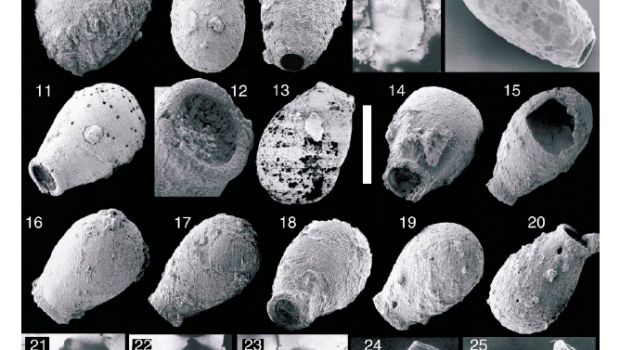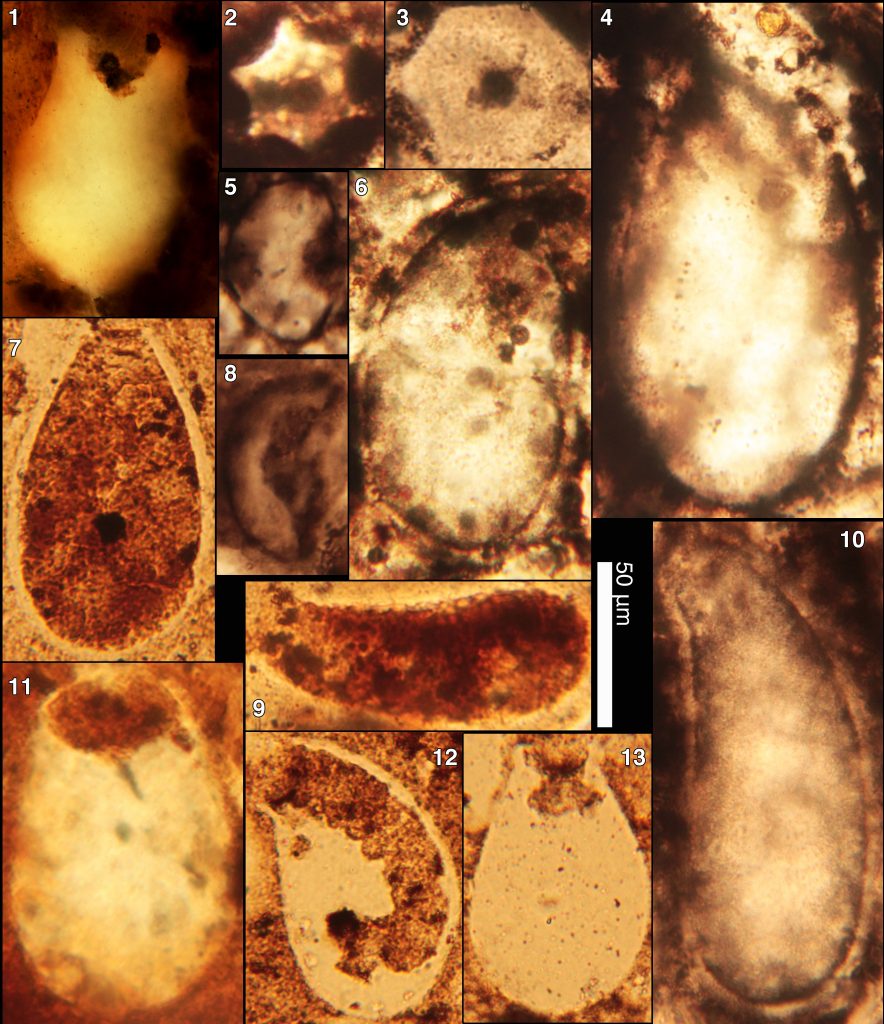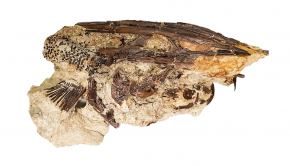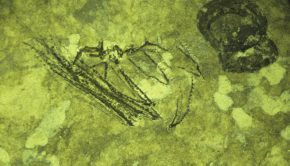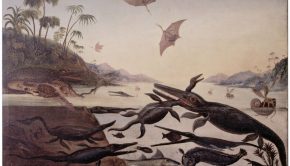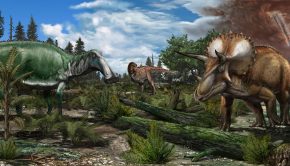Episode 84: Neoproterozoic Acritarchs
Geology, as a subject, has for the most part assumed that there were no fossils to be found earlier than the Cambrian period. In the current day, we’re better-informed and are able to find good records of life before the Cambrian Explosion. Despite this, the structure of the Palaeocast website, with different pages for each period of the Phanerozoic Eon, shows we’re still biased against anything earlier than the Cambrian. We are guilty of lumping the majority of the evolution of life into the ‘Precambrian’: an Eon that represents the entire 4.6 billion year history of the Earth minus the 541 million years of the current Phanerozoic.
In this episode, we interview Dr Leigh Anne Riedman, University of California, about life during the Neoproterozoic Era, the most recent of the Precambrian Eon. This time interval is far from straight forward; not only were there changes in oceanic and atmospheric chemistry, but also dramatic shifts in climate and the formation and subsequent rifting of the supercontinent Rodinia. The Neoproterozoic also saw major biological innovations and ended with the appearance of the enigmatic Ediacaran Fauna.
Leigh Anne studies acritarchs, relatively simple, single-celled walled microorganisms and by examining their diversity and abundance, she is able to comment on how life fared during this turbulent time.
Podcast: Download (Duration: 44:59 — 62.7MB)
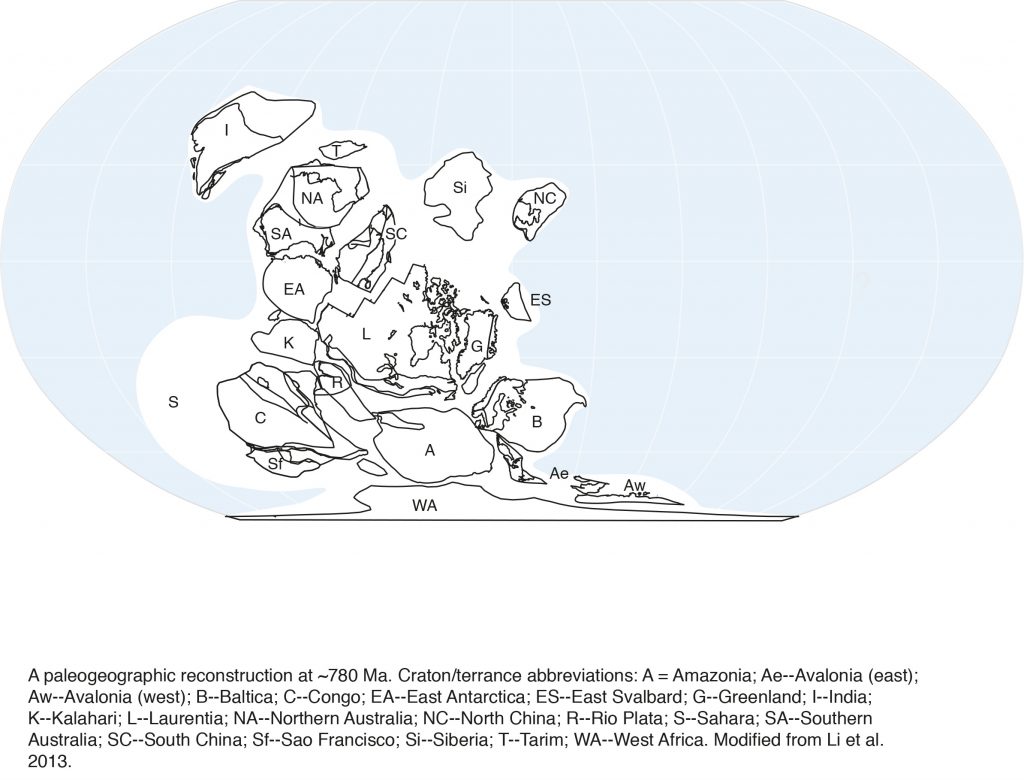
Paleogeographic reconstruction of ~780 Ma (before the large ‘snowball earth’ glaciations that started at 720 Ma). Modified from Li et al., 2013 Sedimentary Geology v.294. The Neoproterozoic was a Era of great change during which many important geological and biological events occurred.
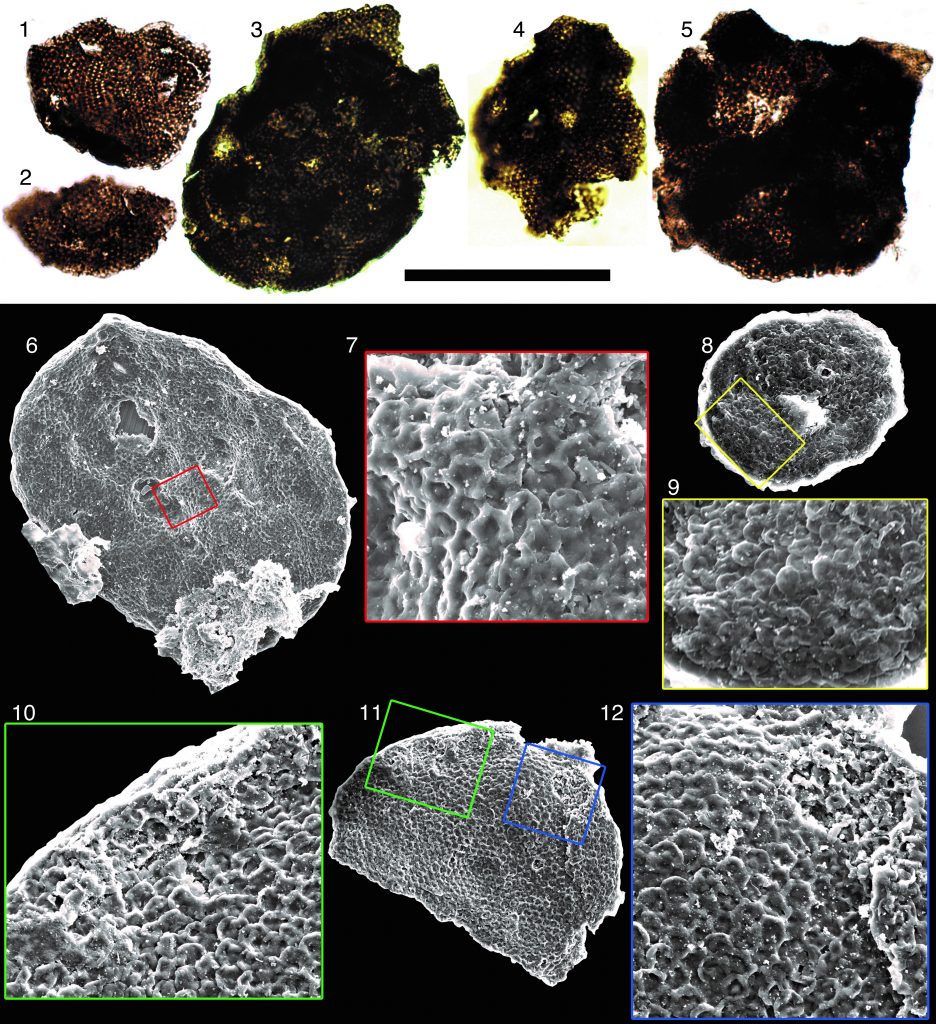
Acritarchs are defined as any small, sphaeroidal, non-acid digestible microfossil that can’t otherwise be identified. As such, acritarchs are likely composed of fossils from many different established and new groups. Pictured: Culcitulisphaera revelata (translates to “Ball of tiny pillows, revealed”) from Riedman and Porter, 2016. Scale bar is 50 microns for 1-6, 8, 11; 8 microns for 7, 16 microns for 9, 10, 12. Scale bar in second figure is 10 microns for all images.
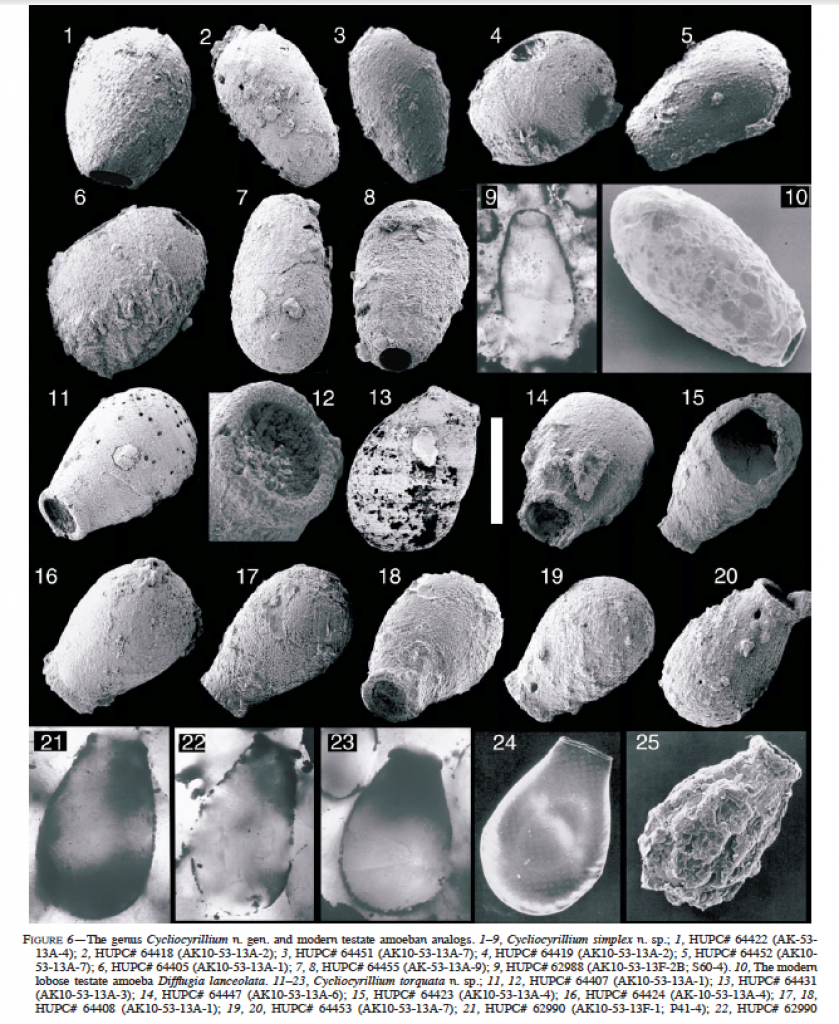
Some microfossils can however be identified. These vase-shaped microfossils are widely believed to be testate amoebae, which can still be found today. Try to identify the modern examples amongst these fossils. Fossils from Chuar Group, Grand Canyon, Porter et al., 2003.
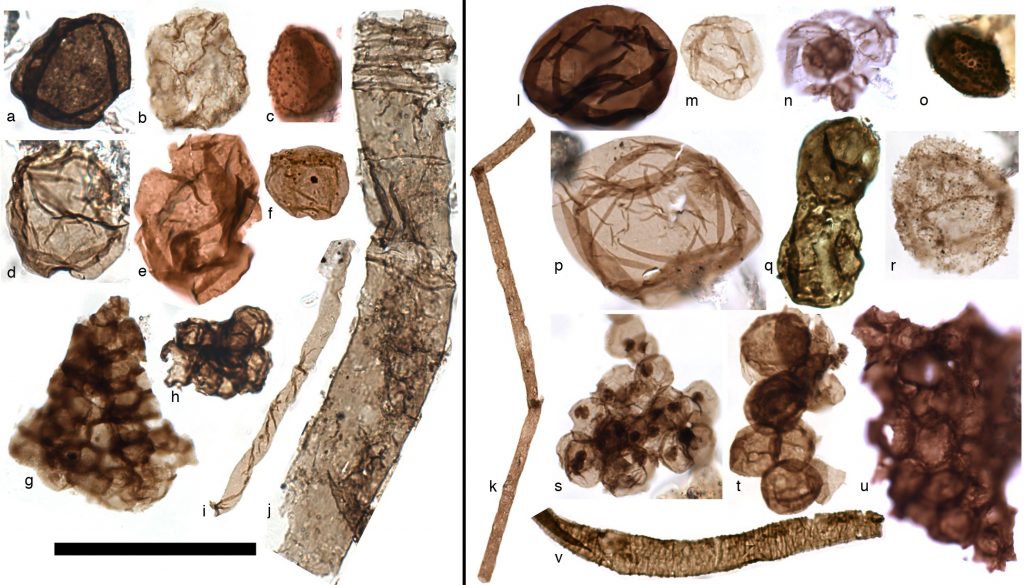
By comparing the microfossils assemblages around the major glaciations of the Neoproterozoic, Leigh Anne has been producing diversity estimates of eukaryotic diversity through this crucial time. Fossils representative of Sturtian (Snowball) and interglacial assemblages. Glacial to the left of the black line, interglacial to the right. Scale bar is 100 microns for J and K and 50 microns for all others. From Riedman et al., 2014.
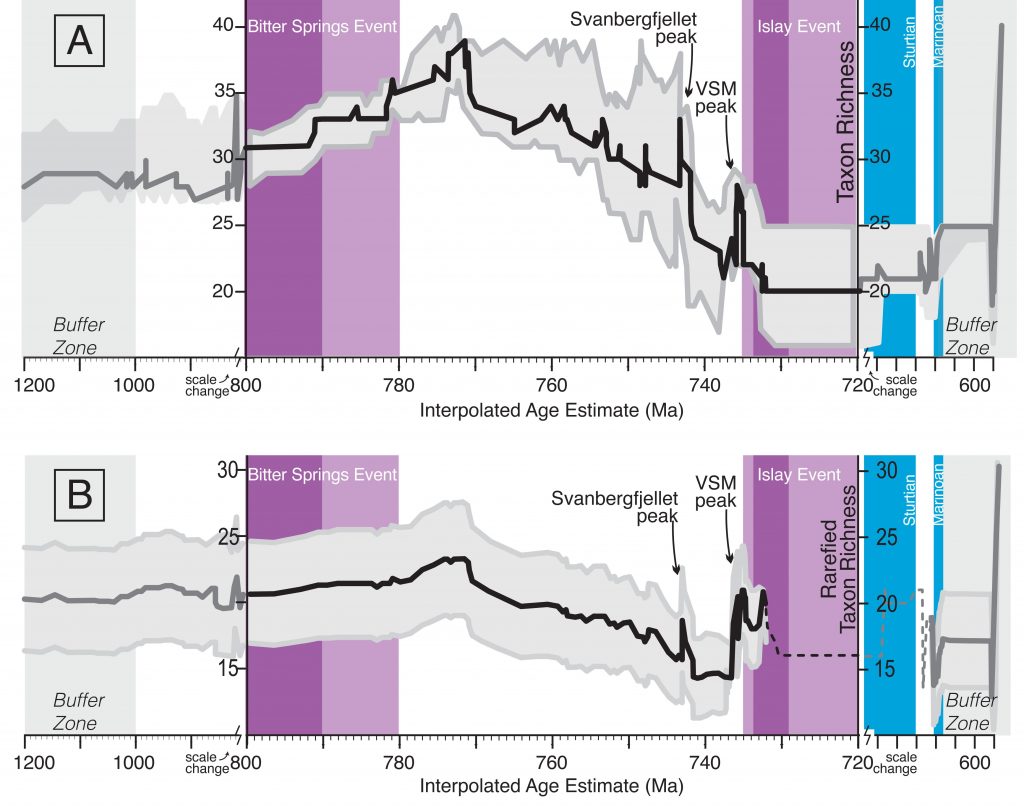
Species richness and (B) rarefied species richness of early to middle Neoproterozoic. From Riedman and Sadler, 2017.(A) Species richness solution (single projection of solution is black line) shown against band (grey) encompassing the sum of five additional solutions. Variation results from heuristic approach of solution algorithm. (B) Rarefied richness curve (black line) of one richness solution in which data are reduced to a uniform sample size of 50 local ranges. Raw richness is unaltered in interval in which actual sample size was lower than 50 local ranges (dashed line). 95% confidence interval for rarefied solution (grey band). The take away message is that even when the number of data points is reduced, the major features of the trend remain, i.e. richness increase onset ~800 Ma, peak ~775 to 770 Ma, broad decrease, sharp increase with appearance of vase-shaped microfossils, then decline with their loss and further drop into Islay carbon anomaly.
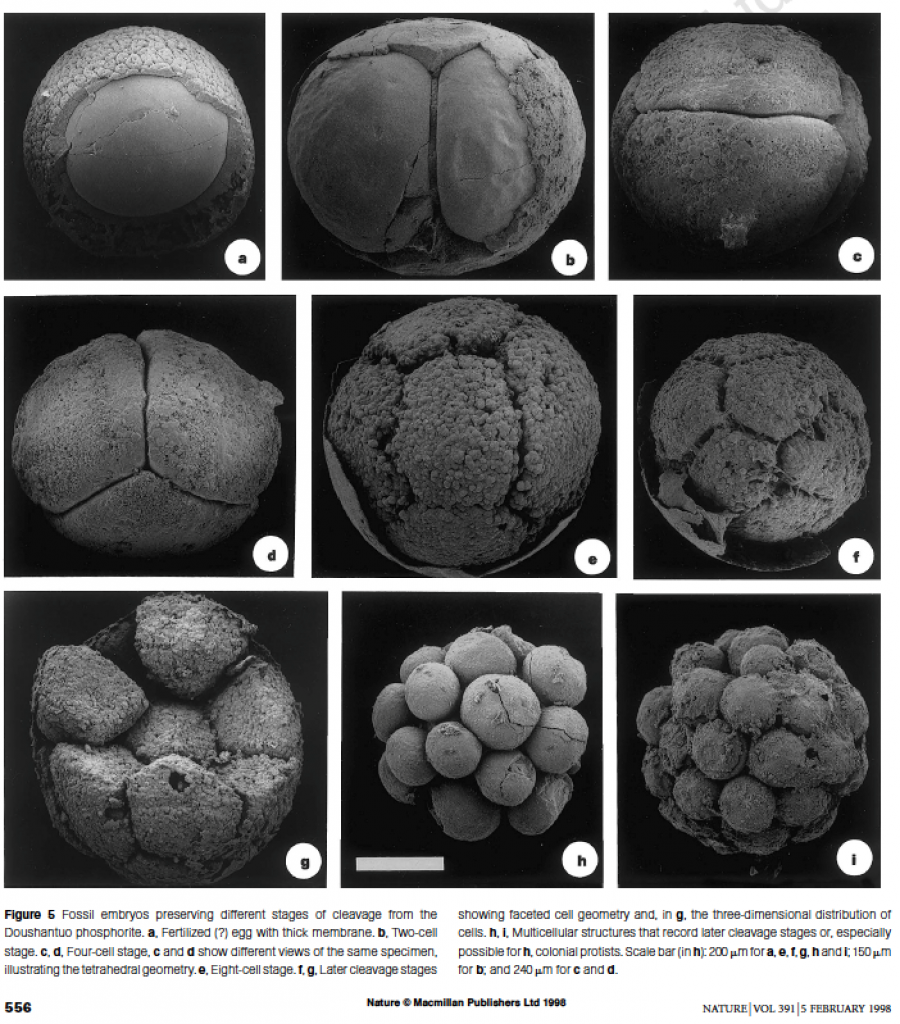
In the aftermath of the ‘Snowball Earth’ glaciations, we find the first evidence of what could be animal fossils. These possible animal embryos are found in the famous Doushantuo Formation. Image Xiao et al., 1998 Nature v.391.
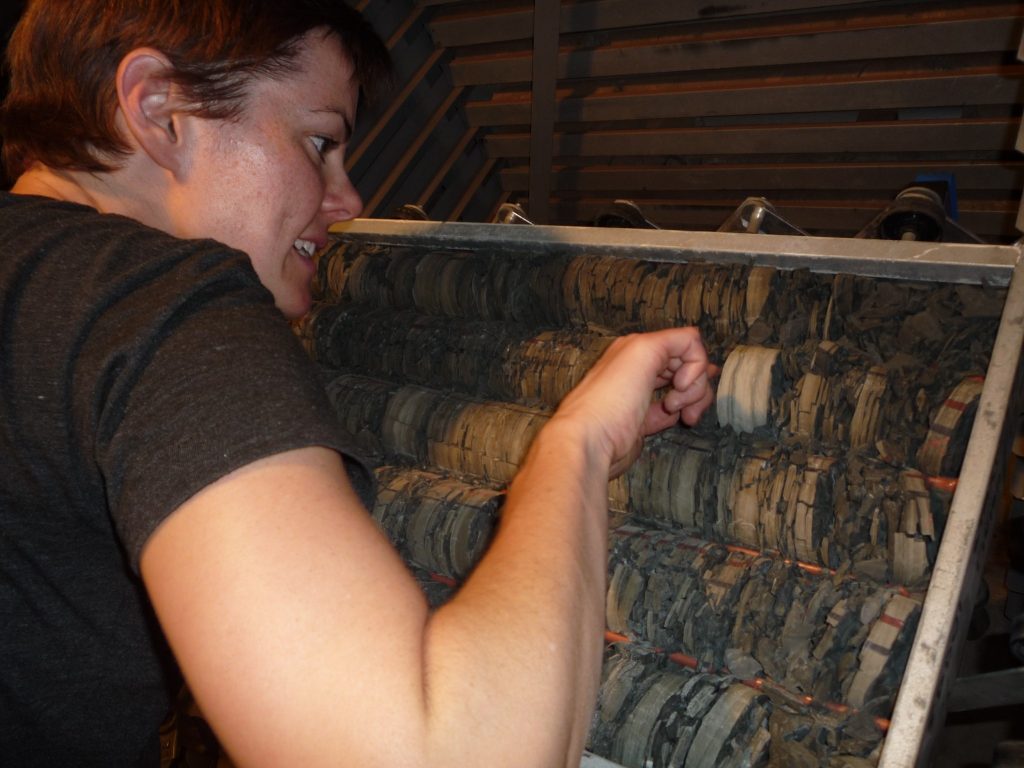
Leigh Anne sampling shales in drill core. It is from these kinds of coring projects, such as the Ocean Drilling Project (ODP), that a lot of microfossil studies get their samples.
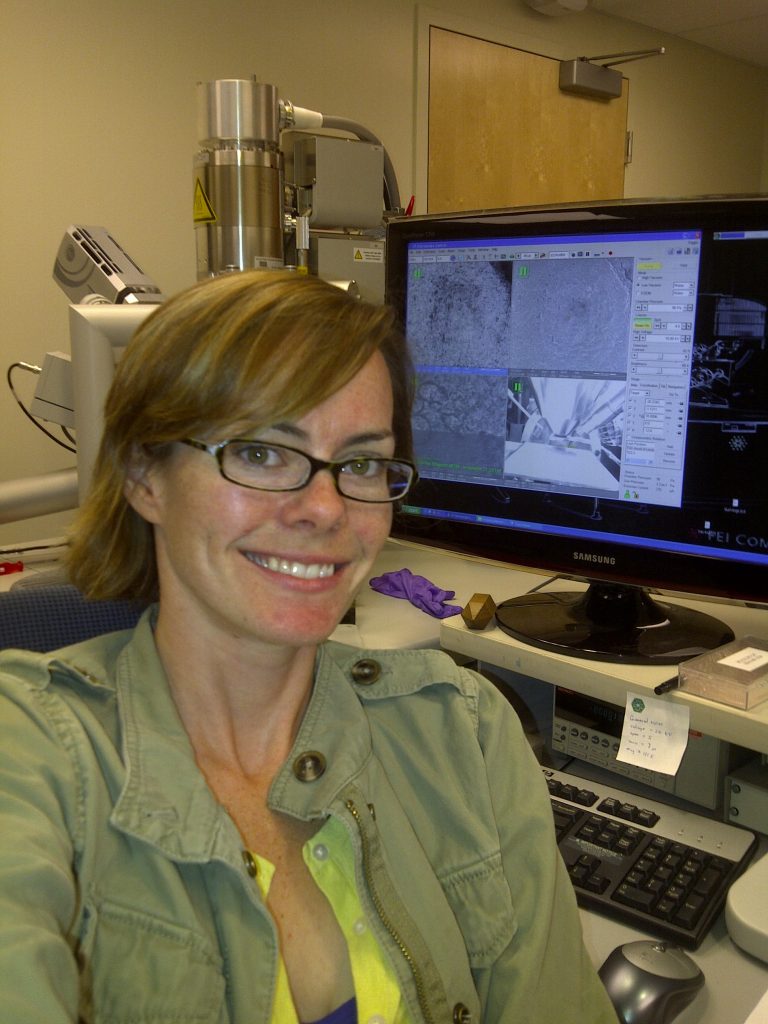
Most samples would be analysed under a transmitting light microscope, however to see specimens in the highest details an SEM is needed.

This interview’s surprise guest: Topanga teh research kitteh, here pictured proofing Leigh Anne’s work.

